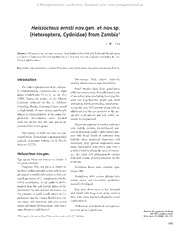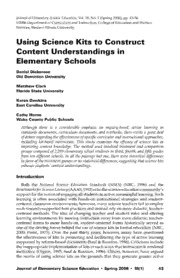
productivity and carbon sequestration under prevalent agroforestry systems in the navsari district PDF
Preview productivity and carbon sequestration under prevalent agroforestry systems in the navsari district
PRODUCTIVITY AND CARBON SEQUESTRATION UNDER PREVALENT AGROFORESTRY SYSTEMS IN THE NAVSARI DISTRICT Name of Student Major Advisor Mr. Panchal Jeegar S. Dr. N.S.Thakur DEPARTMENT OF SILVICULTURE AND AGROFORESTRY ASPEE COLLEGE OF HORTICULTURE AND FORESTRY NAVSARI AGRICULTURAL UNIVERSITY NAVSARI – 396 450 A B S T R A C T An investigation entitled “Productivity and carbon Sequestration under Prevalent Agroforestry Systems in the Navsari District” was carried out in the year 2011-2012, in Navsari District of Gujarat. The agroforestry systems were identified through filed survey following Stratified Random Sampling in five talukas of Navsari district. Four major agroforestry systems i.e. agri-silvi-horticulture (ASH) agri-silviculture (AS), agri-horticulture (AH), and horti- pasture (HP). AH system had maximum (3) system types- Mango + sapota + lemon + coriander, mango + cabbage, mango + rice and followed by AS system representing two system types i.e. Teak + sugarcane and eucalyptus + spider lily. ASH and HP systems had only one system type i.e. mango + teak + brinjal and sapota + grass, respectively. Besides these AS system was represented by two more system types (Teak + Rice and Arjun + Nagali) however these system types were found existing with only one farmer The data of biological and economical yield, carbon sequestration was collected in one cropping season and was analysed to find out the economic viability. Among woody perennials, eucalyptus, under Eucalyptus+spider lily, gave significantly higher woody biomass. Among intercrops under different agroforestry systems, sugarcane under AS (Teak+Sugarcane) system gave maximum biomass. Total biological yield (all components) was higher from AS (system type Eucalyptus+Spider lily) and minimum) was from AH (Mango + sapota + lemon + Coriander) system. Among seven agroforestry system types, highest carbon tonnes per hectare (tree + intercrop) was sequestered by AS (Eucalyptus+Spider lily) system. Most viable agroforestry system on the basis of NPV (Net Present Value), Benefit Cost Ratio (BCR), Equivalent Annual Income (EAI) and compounded revenue was ASH (Teak + mango + brinjal) system followed by AH (Mango + rice) system. I. INTRODUCTION The increasing population need food security along with better environment for healthy living. Human as well as cattle needs like food, housing timber, fuel wood, clothes, medicines, fodder etc., are mostly derived from the plants grown in agricultural field and from natural habitats. Land use systems to secure food availability vis a vis create better living environment needs to be devised and improved keeping in view the needs and changing climatic conditions without compromising the productivity and sustainability of land use system put in place and resources used. One such land use system being advocated fit to address above said questions world over is agroforestry (Jackson et. al., 2007; Jose, 2009; Padmavathy and Poyyamoli, 2013). The monoculture of fruit/fodder/timber trees being risk prone whereas suitable crop combination in the interspaces in the plantations of fruit, timber and fodder and fuel wood tress generate additional income and helps improve productivity per unit area and efficient utilization of natural resources results in improved ecological conditions by locking the atmospheric carbon in woody components for longer period. This technology has dual role in supporting the socio-economic status of the farmers on one hand and mitigating adverse climatic effect of deforestation to greater extent by increasing the green cover index on the other. Agroforestry also leads to a more diversified and sustainable rural production system than many treeless farming alternatives (Pandey, 2007). Escalating concentration of greenhouse gases in the atmosphere and the adverse effects associated with climate change have also necessitated the need for identification of systems with high carbon sink as a mitigation strategy. Tree-based systems either as farm forestry or agroforestry systems have the potential to sequester carbon in a short period. Agroforestry is an ideal land-use option as it optimizes tradeoffs between increased food production, poverty alleviation and environmental conservation Izac et. al. (2000) by sequestering carbon in vegetation and soil, produces wood, serving as substitute for similar products that are unsustainably harvested from natural forests, and also contributes to farmers’s income (Sudha et. al. 2007). World over, it has been estimated that the potential area suitable for agroforestry from land-use change could be up to 630 million ha which would result in storing 586 mt C/yr by 2040, mostly in developing countries (Watson et. al., 2000). The transformation of low productive crop lands into agroforestry can triple carbon stocks from 23 to 70 t/ha in a 25-year period. Average carbon sequestration potential in agroforestry has been estimated to be 25 t/ha over 96 million ha land in India (Sathaye and Ravindranath, 1998). Adoption and sustainability of agroforestry systems depend on the positive interface effects between the physical and biological components both above and below ground. Diagnoses of existing and improved agroforestry land use systems can divulge their production and carbon sequestration potential. Therefore present study is intended to investigate the comparative performance of prevalent agroforestry systems types with varied structure and magnitude to ascertain their production potential, economic viability as well as ecological sustainability. The objectives of the study were: i. To identify the prevalent agroforestry systems in Navsari District ii. To evaluate the biological and economic yield of agroforestry systems iii. To estimate carbon stocks in different agroforestry systems II. REVIEW OF LITERATURE Agroforestry is relatively a new area of research. Investigations on agroforestry interface both above and below ground are still needed to evolve with variety of economically and ecologically feasible agroforestry systems. To augment better comprehension on the present study the available literature have been reviewed on various aspects under different land use systems under following major heads. 2.1. Growth and yield 2.2. Carbon sequestration 2.3. Nutrient dynamics 2.4. Economics 2.1. Growth and yield In India, due to competition for land due to intense population pressure, rapidly depleting fuel wood resources, time- scale orchard operations, and dispersed distribution of benefits from forestry and seasonal shortage of labour; the growing of trees did not find a suitable place in rural economy and rangeland development programmes in the past. However, due to enormous pressure on non- renewable land resource, emphasis is now shifting towards agroforestry based land use system. Intercropping of agricultural crops with woody species is an age-old practice in traditional farming systems in the tropics. Growing of arable crops in association with trees is one of the viable sources to sustain the agricultural production and stabilize the rural economy (Rekha et. al., 2007). Depommier (2003) revealed that agroforestry is extensively practiced in India in the form of the shifting agriculture, a variety of cereal cropping system, home garden system, traditional plantation system etc, but in recent times many of these system have started breaking down because in many situation, high diversity based agroforestry system have been replaced by low diversity simplified cash crop systems. He also observed that gaps in the knowledge of multipurpose trees and systems functioning needs to be better understood for sustainable agroforestry. Varadaranganatha and Madiwalar (2010) found that there were six prominent agroforestry systems practiced in the three distinct agroecological situationsin Uttara kannada district of Karnataka. In all the three situations, bund planting (21.66 to 36.67 %) was the most prominent agroforestry practiced by farmers, followed by horti- silviculture system (3.33 to 23.33 %) and less prominent practice was block plantation (5.0 to 11.66 %). Bijalwan et. al., (2009) in mid hill situation of Garhwal Himalaya studied structure and composition of tree species and productivity of agricultural crop under existing agroforestry system viz. agrihortisilviculture and agrihoriculture system during Rabi and Kharif seasons in the year 2004-2006. In the agricultural crop the grain yield was recorded highest (1197 kg/ha/yr and biological yield 4110 kg/ha/yr) under AHS in northern aspect as compared to 2027 and 6070 kg/ha/yr sole cropping. On an average reduction of 46.38 percent in gain yield and 39.93 percent in biological yield compared to sole cropping but this reduction is supplemented by multipurpose benefit of wood production which has greater importance for rural community of this region. Dwivedi et. al. (2007) in their study on outcome of socio- economic diagnosis of traditional as well as commercial agroforestry practices followed by farmers in western Uttar Pradesh, observed that tree species like Azadirachta indica, Acacia nilotica, Dalbergia sissoo and Eucalyptus spp. were dominant species in traditional system whereas, Populus deltoides and Eucalyptus spp. were the main species of commercial agroforestry. The net return from tree produce ha-1 per annum in traditional system was Rs. 989, 541 and 440 for marginal, small and medium farmers, respectively. In commercial region, B:C ratio has higher (3.00) for poplar based agrisilviculture than poplar (2.84) and eucalyptus (2.68) based bund system. Although traditional agroforestry seems less promising as compared to commercial agroforestry, but it is also relevant to the farmers’ livelihood. Oraon et. al., (2005) found that in Kumharia village of Ranchi district people adopts different land use practices such as agriculture, agroforestry home garden and fallow land on their agricultural land. The yield performance of agricultural crops, vegetable and grasses indicated additional benefits from same land, thereby raising per unit area production. Their study further revealed that, amongst agroforestry systems viz. agrisilvicultural, silvipastoral and home garden systems, wood volume production by subabul (Leucaena leucocephala) under agrisilviculture was maximum, whereas in silvipastoral system gamhar (Gmelina arborea) produced highest wood volume. Kala (2010) in the hilly villages of Uttarakhand state of India, observed a gradually decline in the rainfed hill agro-forestry system. Water scarcity, migration of youth in search of employment and changing socio-economic and climatic conditions were some of the major reasons for declining agro-forestry system and abandoning the agricultural land. The major cereals produced by farmers were Oryza sativa L., Echinochloa frumentoacea Link., Eleusine coracana (L.) Gaertner and Triticum aestivum L. Studies carried out by Tynsong and Tiwari (2011) in south Meghalya revealed that arecanut agroforests are less diverse and less dense than the natural forests. In arecanut agroforests, the density of economically important species was significantly higher indicating deliberate promotion of such species. Bellow et. al., (2008) find out that fruit based agroforestry systems are common in northwest Guatemala as low intensity home garden and are known to increase total farm productivity in communities where farm size is a limiting factor. They also observed that fruit based agroforestry was potentially more attractive to relatively prosperous families or those with larger land holdings. Rai et. al., (2009) observed that among multipurpose tree species (MPTs), viz. Acacia nilotica var cupressiformis, Dalbergia sissoo and Hardwickia binata in a silvipastoral system, D.sissoo attained highest growth parameters at research farm of National Research Centre for Agroforestry, Jhansi. Pruning of MPTs resulted into decrease in height, collar diameter, diameter at breast height and canopy spread. D.sissoo gave 0.36 t ha-1 yr-1 of leaf fodder and 1.8 ha-1 yr-1 fuel wood followed by H.binata. They also found that fourth year onwards, pasture production decrease significantly under different MPTs based silvipastoral system with maximum decrease in D.sissoo as compared to pasture alone. Irrespective of MPTs pruning result an increase in understorey pasture production. Ravi et. al., (2009) carried out an investigation with four shade tolerant fodder crops to find out the combatable Ailanthus excelsa based agroforestry system at forest college and Research Institute, Mettupalayam. Study revealed that the growth and yield of the test crop were reduced under intercropping when compare to pure cropping. Among the test crop, Desmanthus was most affected and fodder cowpea was least affected. Patil et. al., (2010) conducted a long-term agroforestry experiment consisting of arable crops (Paddy, maize, sunhemp). Silvicultural trees viz., Eucalyptus tereticomis, Casuarina- equisetifolia. Albizia molucana, Tectona grandis, Dalbergia sissoo, horticultural tree (sapota) and pasture crop (guinea grass) on black clayey soils at Prabhunagar (Dharwad) during 1976. Sapota (Achras sapota) was planted at 10 m apart and three tree species were planted in between 2 Sapota plants. Guinea grass (Panicum maximum) slips were planted on either side of sapota and tree species in a small strip of 1 m width. At the end of 17 years (felling all short rotation trees and only adjoining long rotation trees), economic analysis indicated that, benefit cost ratio and internal rate of returns were highest in agroforestry system with T. grandis (1.67:1 and 23.2%, respectively) and were lowest in sapota+C. equisetifolia (0.99:1 and 12%, respectively). The economic analysis at the end of 28 years (felling trees) indicated that benefit cost ratio was higher in sapota+T. grandis+field crops (3.23:1) followed by sapota+Lagerstroemia lanceolata+field crops (2.71:1) and sole sapota (2.36:1). This teak based agroforestry model is economically viable agroforestry system. Jaimini et. al., (2006) worked on khejri based silvipastoral system and indicated higher fodder yield below the Khejri tree canopy (49.50 q/ha) followed by between Khejri rows (40.25 q/ha.) and lowest forage yield was observed in sole dhaman grass without khejri tree (38.75 q/ha.) Sharma and Chauhan (2003) studied the performance of Soyabean corp under tree species (Prunus domestica, Morus alba and Punica granatum) at Dr. Y. S. Parmar University of Horticulture and
Description:The list of books you might like

The Sweetest Oblivion (Made Book 1)

The Strength In Our Scars

The Subtle Art of Not Giving a F*ck

Believe Me
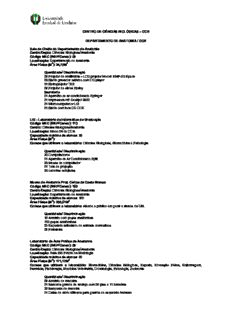
CENTRO DE CIÊNCIAS BIOLÓGICAS – CCB DEPARTAMENTO DE ANATOMIA / CCB Sala da
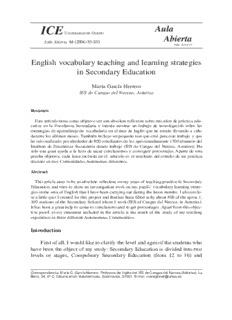
Aula Abierta - Dialnet
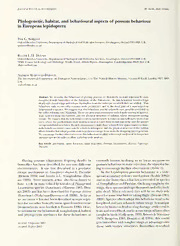
Phylogenetic, habitat, and behavioural aspects of possum behaviour in European lepidoptera

BWT AQA basic

Tell Me to Stay - Charlotte Byrd
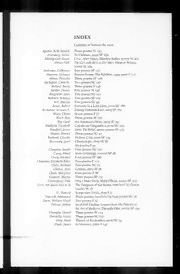
Prairie Schooner 2006: Vol 80 Index

Lengvumas
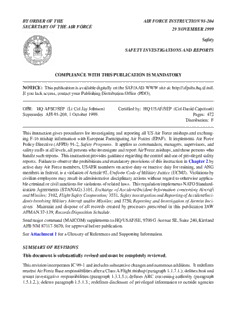
BY ORDER OF THE AIR FORCE INSTRUCTION 91-204 SECRETARY OF
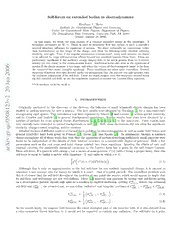
Self-forces on extended bodies in electrodynamics
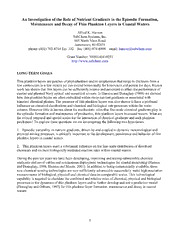
DTIC ADA521776: An Investigation of the Role of Nutrient Gradients in the Episodic Formation, Maintenance and Decay of Thin Plankton Layers in Coastal Waters
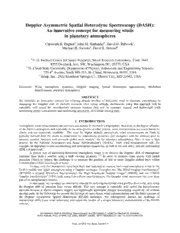
DTIC ADA522013: Doppler Asymmetric Spatial Heterodyne Spectroscopy (DASH): An Innovative Concept for Measuring Winds in Planetary Atmospheres
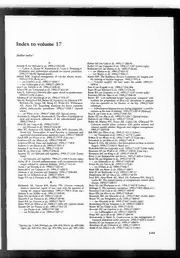
Journal of Vascular Surgery 1993: Vol 17 Index

AMO Overview

BİTKİ KORUMA MAKİNALARI 6 Kaynak
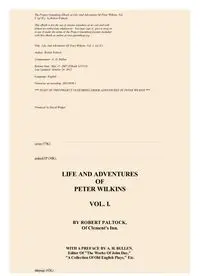
Life and Adventures of Peter Wilkins Vol I by Robert Paltock of Clements Inn
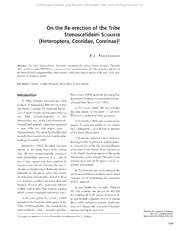
On the Re-erection of the Tribe Stenoscelideini SCHAEFER (Heteroptera, Coreidae, Coreinae)
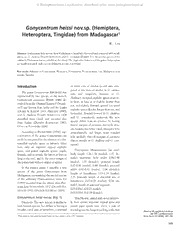
Gonycentrum heissi nov.sp. (Hemiptera, Heteroptera, Tingidae) from Madagascar
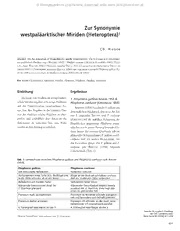
Zur Synonymie westpaläarktischer Miriden (Heteroptera)
